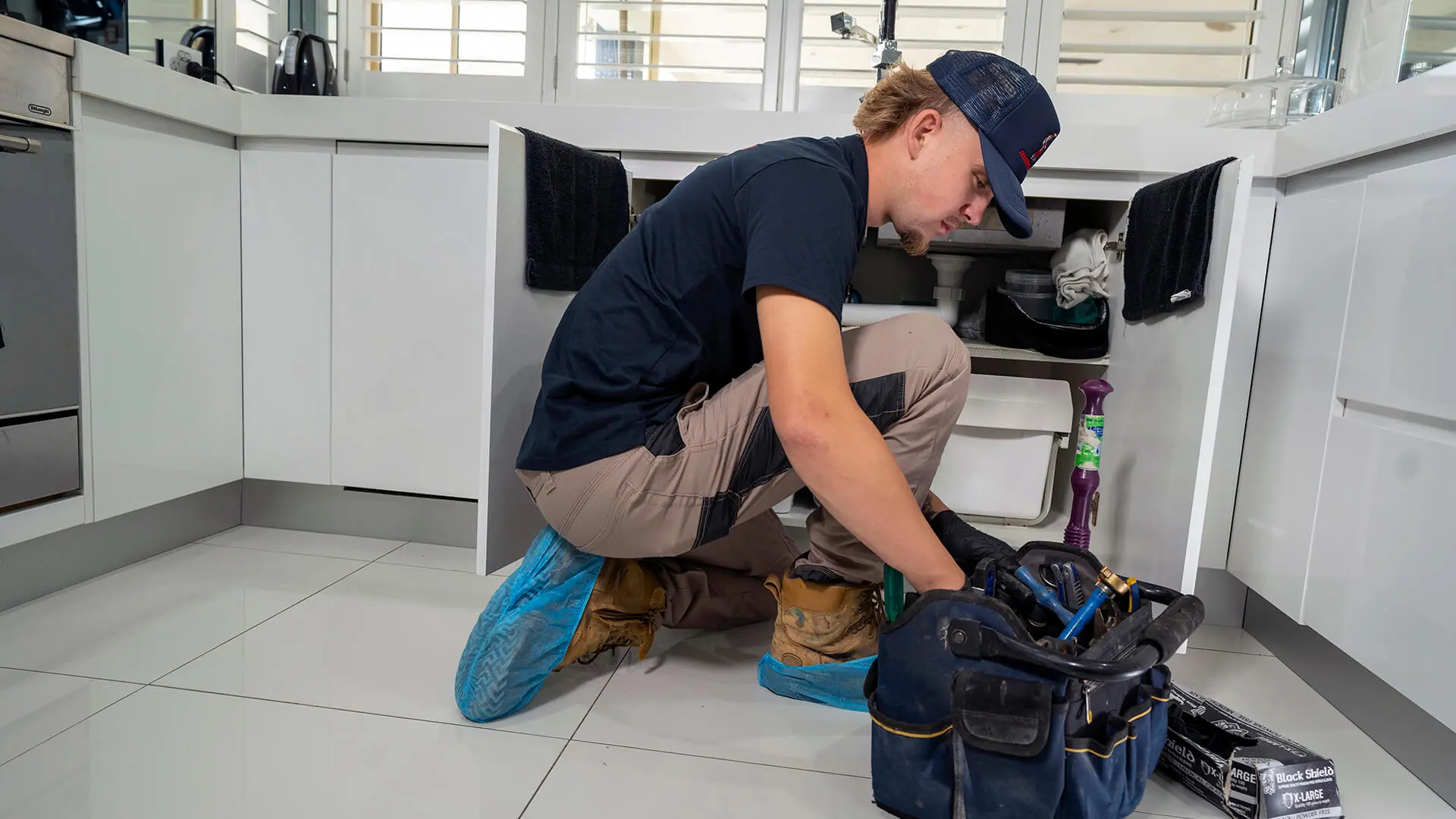What're your thoughts and feelings on 7 Ways To Fix A Slow-Draining Sink Before You Call A Plumber?

Intro
We've all existed: You're brushing your teeth or washing your hands, and you discover the water pooling in the sink. As opposed to swiftly swirling down the drain, it sticks around, turning your once-refreshing early morning routine into a small overload scene. A slow-draining sink isn't just irritating; it's commonly an indicator of bigger pipes issues lurking below the surface. The bright side is that the majority of slow-draining sinks can be taken care of with a little expertise, a couple of fundamental devices, and some patience. All set to tackle this project head-on? Let's roll up our sleeves and dive right in.
Understanding the Sources Of a Slow-Draining Sink
Before you start poking around in your pipelines, it aids to know what might be creating the slowdown. Recognizing the source makes it much easier to select the ideal fix.
Devices and Products You'll Require
The right tools make all the distinction. Fortunately, you won't require a fully equipped plumbing technician's van to finish the job.
Step-by-Step Overview to Repairing a Slow-Draining Sink
Now, allow's get into the nitty-gritty. This detailed process will lead you via straightforward techniques to restore your sink's water drainage.
Action 1: Get Rid Of and Tidy the Stopper
Typically, the stopper (that little plug you push down to block water) is the very first wrongdoer. Remove it meticulously and wipe any hair or gunk trapped around its base. Rinse it completely before putting it back in place.
Action 2: Use a Plunger to Remove Debris
Got that bettor ready? Placement it over the drainpipe and give it a few firm pumps. The idea is to create suction that can loosen any type of obstruction. If you see bits of debris drifting up, you get on the appropriate track.
Action 3: Try a Drain Snake or Wire Wall Mount
If the plunger doesn't do the trick, it's time to highlight the drain serpent. Delicately feed it right into the drainpipe and twist as you go. You could really feel some resistance-- that's likely the clog. Keep twisting and drawing till you eliminate the obstruction. If you don't have a drainpipe snake, a corrected cord wall mount can work in a pinch.
Step 4: Apply a DIY Drain Cleanser
A natural cleaner made from baking soda and vinegar can break down recurring gunk. Pour half a cup of cooking soda into the drainpipe, complied with by half a mug of vinegar. Let it fizz for about 15 minutes, after that flush with hot water. This chemical reaction typically does marvels for minor blockages.
Tip 5: Reconstruct and Test the Sink
Put every little thing back together and run the tap. Does the water now swirl down the drain at a decent speed? If yes, provide yourself a pat on the back. If not, don't misery-- there are still a couple of even more tricks up your sleeve.
Vital Devices for Do It Yourself Repair Works
A plunger is your best beginning point. A small, sink-sized plunger develops suction that can remove small obstructions. For even more persistent obstructions, a drainpipe serpent (often called a plumbing professional's auger) functions marvels. A pair of gloves, a flashlight, and possibly a pair of safety safety glasses are additionally helpful.
Recommended Cleansing Solutions
Light meal soap and hot water can assist break down oily accumulation. A mix of cooking soft drink and vinegar is a tried and true home remedy, and enzymatic cleaners use an even more environment-friendly approach. Keep chemical drain cleaners as a last hope, as they can be rough on your pipelines.
Common Offenders Behind Slow Drain
So, what's blocking things up? Commonly, it's a mixture of everyday particles-- assume hair, soap scum, toothpaste deposit, and remaining food bits. Over time, these tiny bits collect and hold on to the pipeline walls, progressively narrowing the passage and making it harder for water to travel through. In some cases, mineral deposits from tough water can additionally contribute to the gunk, creating the best storm for stubborn clogs.
When is it Time to Do Something About It?
If you see the water draining pipes slower than usual, it's an excellent idea to step in earlier instead of later on. Waiting too long can lead to complete obstructions, undesirable odors, or perhaps pipe damage. If the water takes greater than a couple of secs to clear out after shutting off the tap, consider it a red flag and get ready to put on your DIY hat.
Security First: Preventative Measures and Prep work
Before you launch into unclogging setting, consider security. You're taking care of potentially unclean water and particles, so slip on a set of gloves. If you're making use of chemical cleaners, ensure the room is well-ventilated and follow the instructions on the label.
Protective Gear and Work Area Setup
Lay down some old towels or rags around the sink location to capture splashes. Eliminate any type of items that may get in your method, like soap dispensers or toothbrush owners. Ensure you have excellent lighting-- order a flashlight if needed.
Different Methods for Stubborn Clogs
Not all blockages are developed equal. If your sink still declines to coordinate, think about these alternative options.
Sodium Bicarbonate and Vinegar Method
We currently touched on this, but it's worth keeping in mind once more. This mild, eco-friendly method is much safer than chemical cleaners and usually quite effective.
Enzymatic Drainpipe Cleaners
Enzyme-based cleansers use all-natural germs to absorb raw material. They're a superb selection if you're seeking to stay clear of harsh chemicals. Simply bear in mind, they might take a bit longer to function their magic.
Chemical Drain Cleaners: Advantages And Disadvantages
Chemical cleaners can blast via tough obstructions quick, but they're not without downsides. They can produce warmth and fumes, damage pipes if used excessively, and posture environmental threats. Use them moderately, and constantly follow the instructions thoroughly.
Preventive Measures to Keep Your Sink Flowing
Avoidance is the very best treatment. By embracing a few easy habits, you can maintain your sink from slowing down to begin with.
Normal Cleaning Up Behaviors
Wipe down the sink container and fixture location regularly. Remove hair or food bits prior to they have a possibility to wash down the drainpipe.
Avoiding Dangerous Materials Away
Think twice prior to discarding coffee premises, oil, or coarse veggie scraps down the sink. These offenders cling to pipe walls, creating blockages over time.
Routine Upkeep Checks
Arrange a fast regular monthly evaluation. Run hot water through the sink for a few minutes, taking note of the flow. If it appears sluggish, act quick prior to it comes to be a full-blown clog.
When to Call a Professional Plumbing Technician
Occasionally, despite exactly how hard you try, that obstruct just will not budge. That's when it's time to generate the pros.
Indicators That Indicate a Much More Serious Issue
If your sink drains pipes gradually despite numerous attempts, or if you discover water supporting in various other components (like your shower or toilet), you may have a much more significant plumbing issue lurking much deeper in the system.
Stabilizing Do It Yourself Efforts with Specialist Help
While DIY can save you cash and provide a feeling of success, there's no embarassment in calling an expert. An expert plumber can evaluate your entire pipes arrangement, making certain there's no underlying damage or long-term issue that might cost you extra down the road.
Contrasting Costs and Long-Term Solutions
Prior to choosing, take into consideration the big picture. An economical, quick fix may resolve the problem momentarily, however investing in an extra irreversible option might conserve you money and tension in the long run.
Evaluating the Expenses of Do It Yourself vs. Expert Solutions
DIY repairs frequently set you back little bit more than the cost of a bettor or a container of cooking soft drink. Expert services, on the other hand, included a price tag however might prevent repeated issues and pricey repairs later.
Buying High Quality Fixtures and Upgrades
If your sink's design contributes to constant obstructions, it may be worth updating to higher-quality components or changing the plumbing layout. Consider this an investment in your home's functionality and comfort.
Conclusion
A slow-draining sink can feel like a small inflammation, but it's typically an indication that your plumbing needs a little TLC. By comprehending the origin, employing the right tools and methods, and devoting to basic preventive measures, you can keep your sink moving openly. And when all else fails, never be reluctant to contact a professional-- your home's pipes is worth the investment in care and upkeep.
Three Common Ways to Fix a Slow Drain
Baking Soda Method
Boil a full pot of water. Measure out cup of baking soda and pour it down the drain. Then take cup of the magical cleansing substance known as white vinegar and drop that down there too. Allow the mixture to fizz in the drain for five minutes as the vinegar and baking soda combine. Now dump in that whole pot of boiling water. This combination of cleaning substances should clear out anything that is causing your sink to drain slowly. If it doesn t...
Zip-It
If the baking soda method doesn t clear out your drain, it may be because a significant amount of hair and/or other debris has collected there and you need to remove it. Purchase a Zip-It tool at any home improvement or hardware store and insert it into your drain. It will catch any collected hair or debris that s blocking the flow of water. Pull it out. If it s got a big clump of hair, etc. on the end, you ve probably got your culprit.
Drain Cleaner
If these methods don t work, there is the standard drain cleaner that you can also buy in a hardware store or even your local grocery store. It s better if you can use a household solution, but these drain cleaners often work in a pinch. They re very simple to use. You generally just dump them in your drain and wait. If even this method is not effective, it may be time to call the plumber.
https://www.mrrooter.com/oneida/about-us/blog/2017/july/three-common-ways-to-fix-a-slow-drain/

I ran across that write up on 4 Tips to Fix a Slow Draining Sink when doing a lookup on the web. For those who enjoyed reading our blog entry if you please do not forget to share it. Thanks a lot for your time spent reading it.
Book Instantly
 Emilio Estevez Then & Now!
Emilio Estevez Then & Now! Ralph Macchio Then & Now!
Ralph Macchio Then & Now! Tatyana Ali Then & Now!
Tatyana Ali Then & Now! Seth Green Then & Now!
Seth Green Then & Now! Jeri Ryan Then & Now!
Jeri Ryan Then & Now!